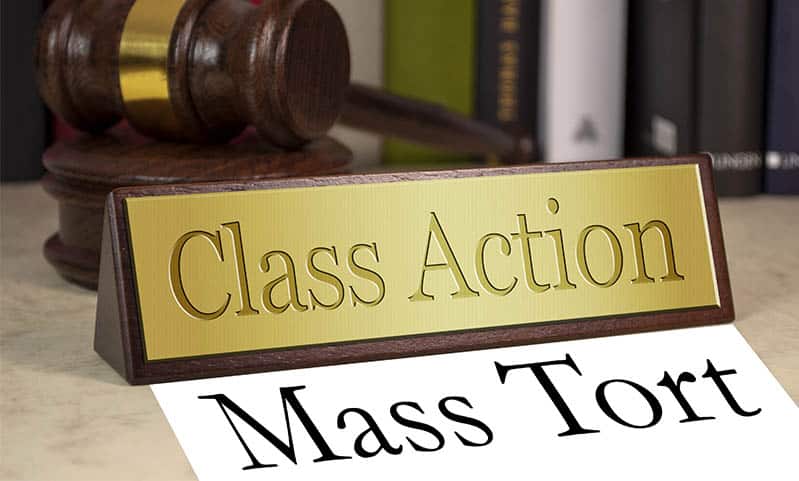Class Action Lawsuits 101: What You Required to Know About Legal Actions
Comprehending Class Action Suit: An Overview for Attorney
Course action suits have come to be an integral part of the lawful landscape, permitting for the debt consolidation of several claims into a solitary activity. For legal representatives, recognizing the complexities of course action litigation is crucial in effectively representing their customers. This extensive guide discovers the principles of class action suits, from determining potential course participants to navigating the certification procedure. In addition, it looks into key approaches for handling class activity lawsuits and provides understandings right into working out and obtaining authorization for settlements. By delving into the complexities of course activity lawsuits, this overview equips legal representatives with the expertise and devices needed to efficiently navigate this complicated area of legislation.
The Basics of Class Activity Legal Actions
Course action claims are a lawful mechanism utilized to consolidate comparable claims from a team of people into a single lawsuit, providing a economical and reliable strategy to looking for justice and resolution. This type of suit allows a representative complainant, acting on part of the whole class, to bring a claim against a defendant who has actually presumably triggered damage or breached the civil liberties of several people.
The fundamental needs for bringing a class action suit include numerosity, commonness, typicality, and competence of depiction. Numerosity refers to the reality that the class must be so huge that joinder of all members would certainly be unwise. Commonness means that there must prevail inquiries of legislation or reality that are shared by all participants of the course. Typicality needs that the insurance claims of the representative plaintiff are normal of the insurance claims of the entire class. Adequacy of depiction guarantees that the representative complainant will properly represent the interests of the entire class.
Class action suits can be useful for both offenders and plaintiffs. For plaintiffs, it allows them to pool their sources and share the dangers and prices linked with litigation. It additionally supplies a level playing area when they are up versus big firms or entities. For offenders, it uses the possibility to efficiently deal with numerous insurance claims in a solitary suit, staying clear of the need to resist numerous specific suits.
Identifying and Assessing Possible Course Participants
After establishing the basic demands for a class action claim, the next action is to identify and examine possible class participants. This procedure involves identifying that may be part of the class and reviewing their insurance claims to figure out if they fulfill the required standards.
To recognize potential course members, attorneys generally perform comprehensive research and gather appropriate info. This might include evaluating documents, conducting meetings, and checking out records to determine people or entities that may have been affected by the alleged wrongdoing. It is critical to establish a clear and detailed checklist of prospective class members to ensure that all affected events are included in the lawsuit.
Once potential class participants have been recognized, the next action is to analyze their insurance claims. This involves reviewing the qualities of each specific case to identify if they fulfill the legal needs for class qualification. Attorneys must meticulously evaluate the facts, evidence, and lawful concepts of each potential course member's claim to make sure that they have a practical instance.
Assessing prospective class participants also includes establishing whether they meet the class interpretation and have experienced comparable injury as a result of the defendant's activities. This requires comparing the truths and scenarios of each possible class participant's situation to the claims and lawful concepts put forth in the suit.
Browsing the Class Qualification Refine
To successfully navigate the class accreditation procedure, legal representatives need to faithfully abide by the procedural demands stated by the court. Course certification is an important action in a course activity lawsuit, as it identifies whether a situation can continue as a course action, representing a group of individuals that have comparable cases against a defendant. The procedure entails satisfying certain requirements, such as numerosity, commonness, typicality, and adequacy of depiction.
Firstly, lawyers should develop numerosity by demonstrating that the course is so big that specific joinder is unwise. This can be accomplished with proof or expert testimony. Second of all, they must develop commonness by showing that there prevail questions of legislation or reality that predominate over individual issues. This needs a detailed evaluation of the defenses and cases included.
Next, legal representatives should reveal typicality, which indicates that the depictive complainant's cases are regular of the insurance claims of the course participants. This makes certain that the rate of interests of the representative complainant align with the rate of interests of the course. Finally, lawyers need to demonstrate adequacy of depiction, indicating that the representative plaintiff and their advice will rather and appropriately represent the passions of the course.
To browse this process successfully, attorneys need to thoroughly prepare by conducting considerable research, gathering proof, and creating an engaging argument that satisfies each of these standards. They must also be prepared to respond to any type of obstacles or arguments raised by the accused. By faithfully sticking to the step-by-step needs stated by the court, lawyers can increase their chances of acquiring class accreditation and advancing the rate of interests of the course members.

Secret Methods for Handling Class Activity Lawsuits
Upon effectively navigating the class certification procedure, lawyers need to after that implement essential approaches for effectively handling course activity litigation. These techniques are critical to guarantee that the instance continues smoothly and efficiently, eventually making the most of the possibilities of a beneficial end result for the course participants.
One trick strategy is to establish a natural and solid lawful group (Class action lawsuit). This entails constructing a team of attorneys with know-how in course activity lawsuits, in addition to various other appropriate areas such as the certain sector or topic involved in the instance. A versatile group can bring various point of views and abilities to the table, improving the total effectiveness of the lawsuits
Another vital approach is to create a well-balanced and thorough lawsuits plan. This plan should detail the general purposes of the situation, in addition to the particular legal theories and disagreements that will certainly be gone after. It should also consist of a timeline and budget plan to guarantee that the situation remains on track and within the allotted sources.
Furthermore, lawyers need to actively engage with the course members throughout the lawsuits Class action lawsuit process (Class action lawsuit). This includes providing routine updates on the progress of the instance, seeking input and responses from the class participants, and addressing any type of issues or inquiries they might have. By promoting open communication and partnership, lawyers can construct count on and assistance among the course members, which can be crucial in accomplishing an effective resolution
Working Out Class Activity Lawsuits: Arrangement and Authorization
When it comes to clearing up class activity claims, reliable negotiation and acquiring authorization are crucial action in accomplishing a resolution. Course activity claims are intricate and entail a multitude of complainants, making it vital to reach a negotiation that is fair and satisfactory to all parties included.

Once a negotiation agreement is reached, it should be authorized by the court. The court's function in this process is to make sure that the negotiation is fair, reasonable, and effectively shields the passions of the course participants. The court will certainly take into consideration factors such as the nature of the claims, the strength of the proof, the possible recuperation for the course participants, and any kind of arguments elevated by course members.
Getting court approval is essential as it provides finality to the negotiation and shields the passions of the course members. It makes sure that the settlement is binding and enforceable, and class participants can get their rightful payment.
Conclusion

Class activity suits have actually ended up being an integral component of the legal landscape, enabling for the debt consolidation of multiple cases into a solitary activity. Class qualification is an important step in a course action claim, as it identifies whether an instance can proceed as a course activity, representing a team of individuals who have comparable cases against an accused. By diligently adhering to the step-by-step demands established forth by the court, attorneys can raise their chances of acquiring course certification and progressing the rate of interests of the course members.
The court will think about variables such as the nature of the claims, the stamina of the evidence, the possible recovery for the class members, and any type of arguments elevated by course participants.
By identifying and evaluating prospective course participants, legal representatives can identify the stability of a class action suit.